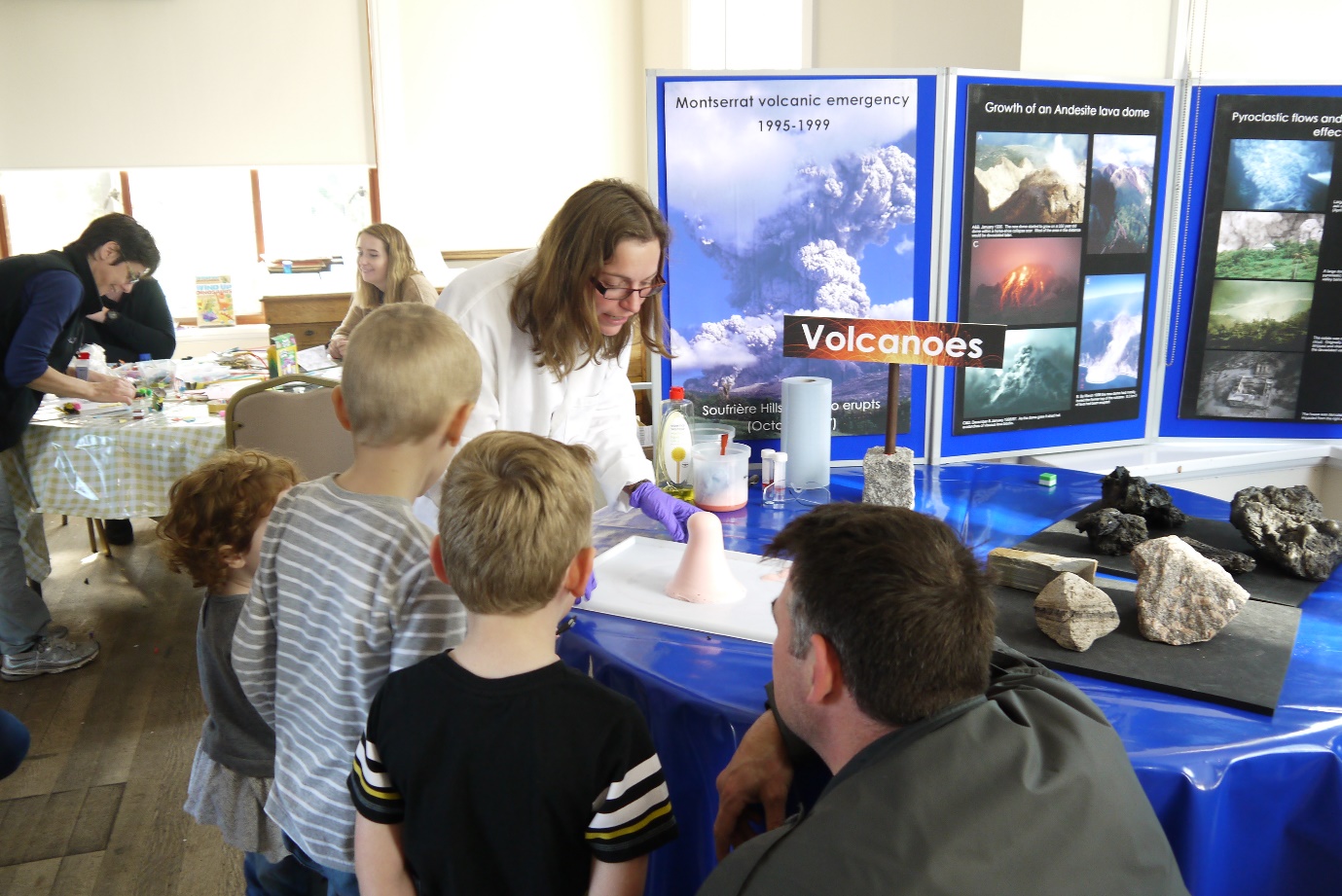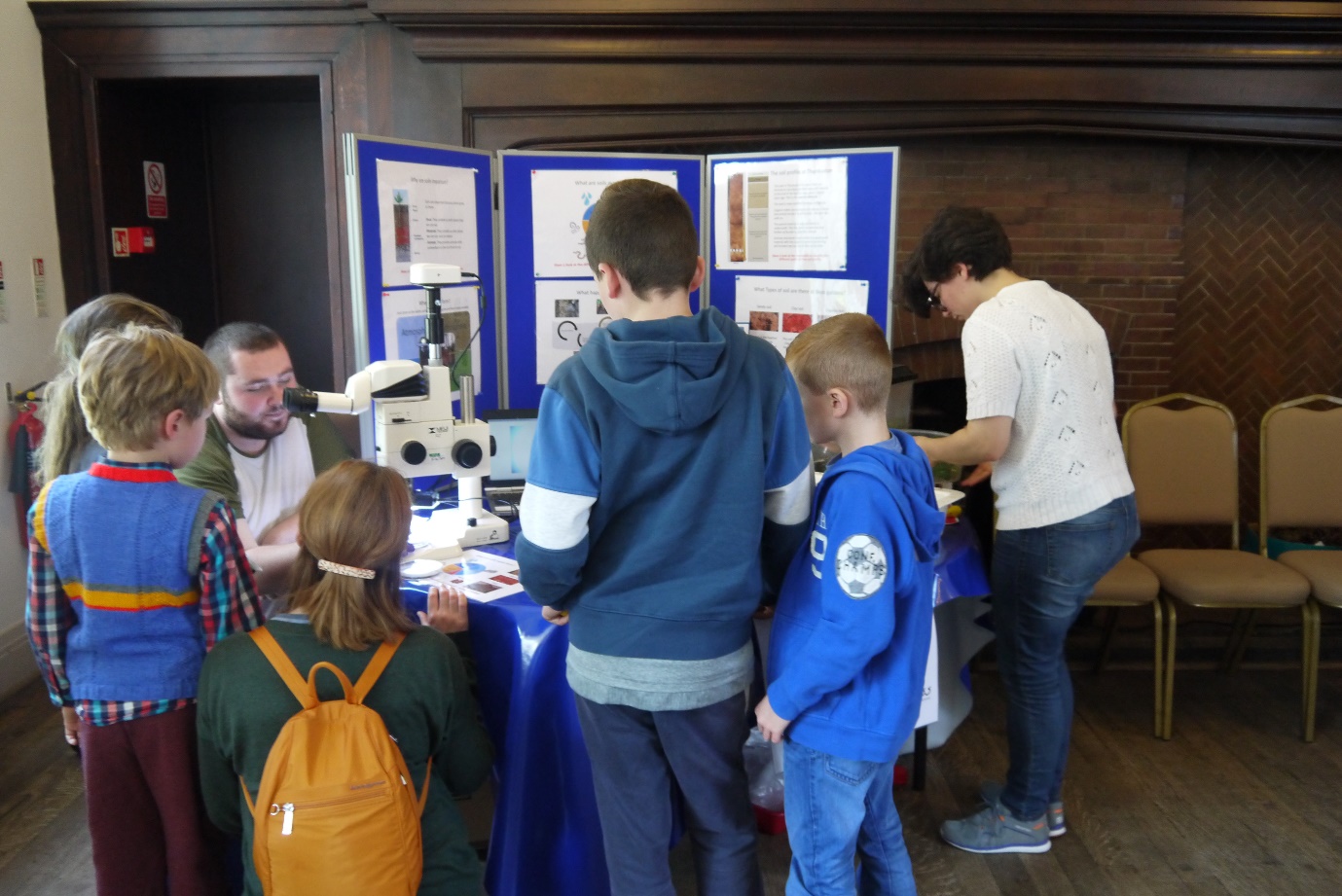Earth Science in Action

Over 350 visitors enjoyed the fun and activities at the Family Science Discovery Day at Ness Gardens to celebrate Earth Science Week in October 2016.
University staff and students showcased and delivered a wide-range of hands-on activities for this year’s theme ‘Earth Science in Action’. Visitors, from toddlers to grandparents, explored Ness Gardens in the sunshine and followed a trail discovering the geology of the gardens. They also learnt how the earth sciences are part of our lives every day and participated in some very exciting activities.

Discovering soils and wiggly worms with Danny and Maddy
The visitors discovered that the largest magnet is the earth, they used Lego to learn how to build earthquake proof houses and they did experiments to see how the sea mixes and how to protect our coastlines. They investigated why worms are so useful and how plant seeds can grow from flower bombs. They watched a volcano erupt, learnt how big dinosaurs were and discovered the different marine creatures that live on our coastline. This was a wonderful range of Earth Sciences in Action!
The feedback from the visitors was excellent and they particularly loved that the activities were hands-on so that the children were really engaged, and so were the adults. All of the children took home paper dinosaurs, pet rocks, flower bombs and bath bombs and prizes of rocks and fossils from the lucky dip.
The Family Science Discovery Day was produced and delivered by Staff and students from the Faculty of Science and Engineering and the National Oceanography Centre, in conjunction with the University Botanic Gardens at Ness on the Wirral.
Rose Froud of Ness Botanic Gardens and the friends of Ness hosted the event and organised the logistics at Ness. Maggie Williams organised the geology trail and the rock and fossil prizes and members of the Liverpool Geological Society helped to support the reception desk. The University’s academic and technical staff, and postgraduate and undergraduate students from the departments of Physics, Chemistry, Geography and Earth, Ocean and Ecological Sciences, the Central Teaching Laboratory and the National Oceanography Centre designed and delivered the activities. The geological Society, London, also provided advertising and funding for gifts for the visiting children.